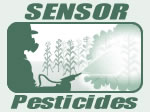Related Research Articles

Berylliosis, or chronic beryllium disease (CBD), is a chronic allergic-type lung response and chronic lung disease caused by exposure to beryllium and its compounds, a form of beryllium poisoning. It is distinct from acute beryllium poisoning, which became rare following occupational exposure limits established around 1950. Berylliosis is an occupational lung disease.

The United Mine Workers of America is a North American labor union best known for representing coal miners. Today, the Union also represents health care workers, truck drivers, manufacturing workers and public employees in the United States and Canada. Although its main focus has always been on workers and their rights, the UMW of today also advocates for better roads, schools, and universal health care. By 2014, coal mining had largely shifted to open pit mines in Wyoming, and there were only 60,000 active coal miners. The UMW was left with 35,000 members, of whom 20,000 were coal miners, chiefly in underground mines in Kentucky and West Virginia. However it was responsible for pensions and medical benefits for 40,000 retired miners, and for 50,000 spouses and dependents.

Pneumoconiosis is the general term for a class of interstitial lung diseases where inhalation of dust has caused interstitial fibrosis. Pneumoconiosis often causes restrictive impairment, although diagnosable pneumoconiosis can occur without measurable impairment of lung function. Depending on extent and severity, it may cause death within months or years, or it may never produce symptoms. It is usually an occupational lung disease, typically from years of dust exposure during work in mining; textile milling; shipbuilding, ship repairing, and/or shipbreaking; sandblasting; industrial tasks; rock drilling ; or agriculture.

Silicosis is a form of occupational lung disease caused by inhalation of crystalline silica dust. It is marked by inflammation and scarring in the form of nodular lesions in the upper lobes of the lungs. It is a type of pneumoconiosis. Silicosis is characterized by shortness of breath, cough, fever, and cyanosis. It may often be misdiagnosed as pulmonary edema, pneumonia, or tuberculosis.

Bernardino Ramazzini was an Italian physician.

Byssinosis is an occupational lung disease caused by inhalation of cotton dust in inadequately ventilated working environments. Byssinosis commonly occurs in textile workers who are employed in yarn and fabric manufacture industries. It is now thought that the cotton dust directly causes the disease and some believe that the causative agents are endotoxins that come from the cell walls of gram-negative bacteria that grow on the cotton. Although bacterial endotoxin is a likely cause, the absence of similar symptoms in workers in other industries exposed to endotoxins makes this uncertain. Current smokers are also at risk for developing byssinosis or having complications relating to byssinosis.

Coal workers' pneumoconiosis (CWP), also known as black lung disease or black lung, is caused by long-term exposure to coal dust. It is common in coal miners and others who work with coal. It is similar to both silicosis from inhaling silica dust and asbestosis from inhaling asbestos dust. Inhaled coal dust progressively builds up in the lungs and leads to inflammation, fibrosis, and in worse cases, necrosis.
Occupational lung diseases are work-related, lung conditions that have been caused or made worse by the materials a person is exposed to within the workplace. It includes a broad group of diseases, including occupational asthma, industrial bronchitis, chronic obstructive pulmonary disease (COPD), bronchiolitis obliterans, inhalation injury, interstitial lung diseases, infections, lung cancer and mesothelioma. These diseases can be caused directly or due to immunological response to an exposure to a variety of dusts, chemicals, proteins or organisms.
Terence E. Carroll earned his B.A. in history from Wayne State University and an M.A. in history from Columbia University. His thesis mentor at Columbia was famed historian Richard Hofstadter. Upon graduation from Columbia, he joined the Detroit Historical Museum as Curator of Industrial History. It was during his time with the Detroit Museum that he became interested in the history of public health.
Workplace health surveillance or occupational health surveillance (U.S.) is the ongoing systematic collection, analysis, and dissemination of exposure and health data on groups of workers. The Joint ILO/WHO Committee on Occupational Health at its 12th Session in 1995 defined an occupational health surveillance system as “a system which includes a functional capacity for data collection, analysis and dissemination linked to occupational health programmes”.

Marcus Malvin Key was a public health administrator and practitioner who served as the first director for the National Institute for Occupational Safety and Health (NIOSH) in the U.S. government.

Sentinel Event Notification System for Occupational Risks (SENSOR)-Pesticides is a U.S. state-based surveillance program that monitors pesticide-related illness and injury. It is administered by the National Institute for Occupational Safety and Health (NIOSH), twelve state health agencies participate. NIOSH provides technical support to all participating states. It also provides funding to some states, in conjunction with the US Environmental Protection Agency.

In 1944, uranium mining under the U.S military's Manhattan Project began on Navajo Nation lands and on Lakota Nation lands. On August 1, 1946, the responsibility for atomic science and technology was transferred from the military to the United States Atomic Energy Commission. Afterward, widespread uranium mining began on Navajo and Lakota lands in a nuclear arms race with the Soviet Union during the Cold War.

Joe Main is an American government official who formerly served as the Assistant Secretary of Labor for Mine Safety and Health and head of the United States Department of Labor's Mine Safety and Health Administration. He was nominated to serve the position by Barack Obama and took office after being confirmed by the United States Senate on October 21, 2009.
Indium lung is a rare occupational lung disease caused by exposure to respirable indium in the form of indium tin oxide. It is classified as an interstitial lung disease.

Occupational dust exposure can occur in various settings, including agriculture, forestry, and mining. Dust hazards include those that arise from handling grain and cotton, as well as from mining coal. Wood dust, commonly referred to as "sawdust", is another occupational dust hazard that can pose a risk to workers' health.
Ruth Rice Puffer was an American biostatistician who headed the Department of Health Statistics of the Pan American Health Organization, where she led the Inter-American Investigation of Childhood Mortality.

Robert J. Anderson was the chief of the Communicable Disease Center (CDC) of the United States Public Health Service, forerunner to the modern Centers for Disease Control and Prevention, from October 1, 1956, to June 30, 1960.

The Division of Industrial Hygiene was a division of the U.S. Public Health Service (PHS) with responsibility for occupational safety and health programs. It existed from 1914 until 1971, when it became the National Institute for Occupational Safety and Health (NIOSH). It had several names during its existence, most notably the Office of Industrial Hygiene and Sanitation in its earlier years and the Division of Occupational Health during its later years.
References
- ↑ Kerr, L. E. (undated). Lorin Edgar Kerr papers, 1941-1981 Manuscripts and Archives, Yale University Library. http://yufind.library.yale.edu/yufind/Record/614172 Archived 2011-07-20 at the Wayback Machine
- ↑ Kerr, L. E. (1971). "The United Mine Workers of America look at occupational health". American Journal of Public Health. 61 (5): 972–978. doi:10.2105/ajph.61.5.972. PMC 1529817 . PMID 5142607.
- ↑ Kerr, L.E.; Cornely, P.B.; Daniels, H.C. (1983). "The United Mine Workers medical care program". Journal of Public Health Policy. 4 (2): 235–236. doi:10.2307/3342436. JSTOR 3342436. PMID 6886001. S2CID 43673162.
- ↑ Kerr, L. E. (undated). Lorin Edgar Kerr papers, 1941-1981 Manuscripts and Archives, Yale University Library. http://yufind.library.yale.edu/yufind/Record/614172 Archived 2011-07-20 at the Wayback Machine
- ↑ Kerr, L.E. (1968). "Coal workers and pneumoconiosis". Archives of Environmental Health. 16 (4): 579–585. doi:10.1080/00039896.1968.10665106. PMID 4231577.
- ↑ Kerr, L. E. (undated). Lorin Edgar Kerr papers, 1941-1981 Manuscripts and Archives, Yale University Library. http://yufind.library.yale.edu/yufind/Record/614172 Archived 2011-07-20 at the Wayback Machine
- ↑ Carroll, T. E. (1965). "Workmen's Compensation and Comprehensive Health Services: Existing and Emerging Patterns". American Journal of Public Health and the Nation's Health. 55 (2): 215–224. doi:10.2105/ajph.55.2.215. PMC 1256180 . PMID 14269205.
- ↑ "An Evening with Terence Carroll" http://www.naphp.org/index.php/fuseaction/magazine.article/articleid/11/ Archived 2007-09-28 at the Wayback Machine
- ↑ Kerr, L.E. (1990). "Occupational health: A classic example of class conflict". Journal of Public Health Policy. 11 (1): 39–48. doi:10.2307/3342891. JSTOR 3342891. PMID 2332490. S2CID 37110041.
- ↑ Derickson, A (1991). "The United Mine Workers of America and the Recognition of Occupational Respiratory Diseases, 1902-1968". American Journal of Public Health. 81 (6): 782–790. doi:10.2105/ajph.81.6.782. PMC 1405142 . PMID 1827571.
- ↑ http://www.apha.org/membergroups/sections/aphasections/occupational/benefits/